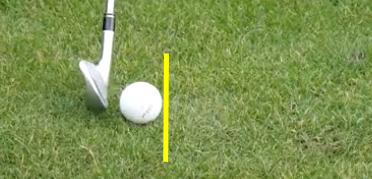The practice swing is a rehearsal swing. It should be the swing you want to copy when you hit the ball. I’ll show you how to make sure your practice swing is exactly that.
When you swing the golf club it is often true that your mind is not fully engaged. Your body starts moving and leaves your mind behind. And the swing doesn’t feel right.
Instead of swinging the club just once, swing the club twice without a break between the two swings. You make one swing all the way to the finish and with a continuous motion swing club back from there make a second swing to the finish. One motion, two swings. 1,2.
The purpose of the second swing is to let your mind catch up. You will find the mental feeling you have during that second swing to be very different from the one you had in the first swing. You will as a result feel a swing that is not only much different than the first one, but will be the one you want to hit the ball with.
When you have done this step up to the ball, take a quick look down the fairway or at the green. Return your eyes to the ball and without hesitation swing the club away while the feeling of that good swing is still fresh.
Doesn’t this take extra time, though? Everyone says in order to speed up play you should only take one practice swing. Well, you are. It’s just that your one practice swing has two parts. This two-part swing hardly takes any longer than a normal one-part swing. So you’re not really taking any extra time by doing this.
A pro once told me that this extra time, if there is any, will be more than made up by you hitting better shots which means hitting fewer shots, and that, friends, saves time.
The key point here is that a two-part practice swing lets you find your best swing. It is certainly possible for that to happen with a juzst one practice swing, but few people are capable of doing that. Give yourself a chance to get it right by taking one two-part practice swing.

